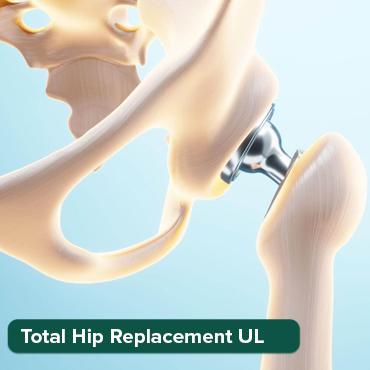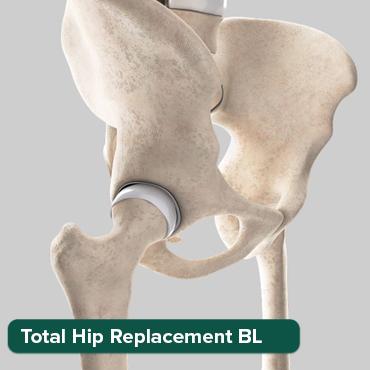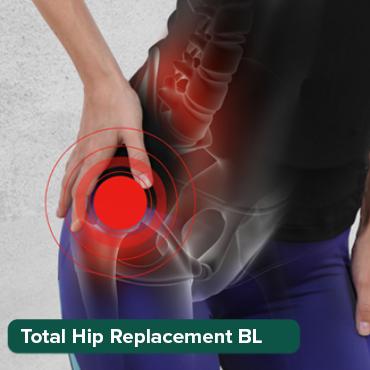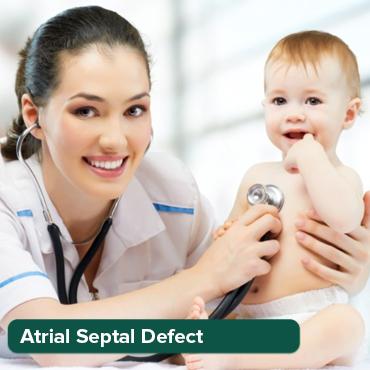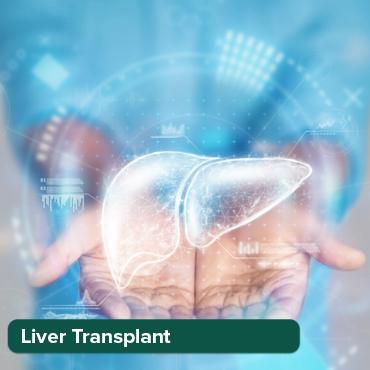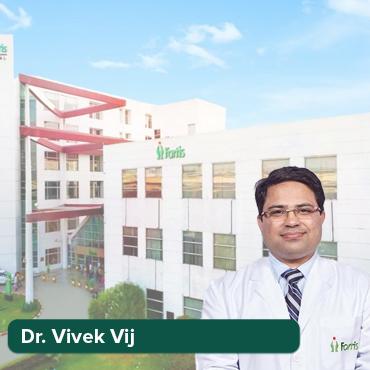
أنواع الفتق: الأسباب والأعراض والعلاج
03 May, 2023
الفتق هو حالة طبية تحدث عندما يبرز عضو أو نسيج من خلال جزء ضعيف أو ممزق من جدار البطن أو أي تجويف آخر في الجسم يحتوي عليه عادة. الفتق شائع جدًا، حيث يصاب به حوالي 5 ملايين شخص في الولايات المتحدة كل عام. هناك أنواع مختلفة من الفتق، ولكل منها أسبابه وأعراضه وخيارات العلاج الخاصة به. في هذه المقالة سوف نستكشف أنواع الفتق المختلفة وأسبابها وأعراضها وخيارات العلاج.
1. الفتق الإربي
الإجراءات الأكثر شعبية في الهند
الفتق الإربي هو النوع الأكثر شيوعا من الفتق، وهو ما يمثل حوالي 70٪ من جميع الفتق. يحدث هذا النوع من الفتق عندما يبرز جزء من الأمعاء أو المثانة من خلال القناة الأربية، التي تقع في منطقة الفخذ. القناة الأربية هي ممر ضيق يسمح للحبل المنوي بالمرور من البطن إلى كيس الصفن عند الرجال ويحمل الرباط المستدير عند النساء. الفتق الإربي أكثر شيوعًا عند الرجال منه عند النساء ويمكن أن يسبب الألم أو عدم الراحة في منطقة الفخذ.
أسباب:
العلاجات الصحية
امنح نفسك الوقت للاسترخاء
أقل الأسعار مضمونة!

أقل الأسعار مضمونة!
السبب الرئيسي للفتق الإربي هو ضعف أو تمدد جدار البطن. يمكن أن يحدث هذا بسبب عوامل مثل الشيخوخة أو الحمل أو السمنة أو السعال المزمن أو رفع الأشياء الثقيلة.
أعراض:
تشمل أعراض الفتق الإربي
- انتفاخ في منطقة الفخذ, ,
- الانزعاج أو الألم في الفخذ ،
- خاصة عند الرفع أو الانحناء،
- الشعور بالضغط أو الضعف في الفخذ، و
- إحساس بالحرقان أو الألم في الفخذ.
علاج:
الجراحة هي العلاج الأكثر شيوعا للفتق الإربي. أثناء الجراحة، يتم إصلاح الفتق عن طريق دفع الأنسجة البارزة مرة أخرى إلى تجويف البطن وتقوية جدار البطن بغرز أو شبكة صناعية.. يمكن إجراء الجراحة كجراحة مفتوحة أو جراحة بالمنظار، وذلك حسب شدة الفتق والحالة الصحية العامة للمريض.
2. الفتق الفخذي
الفتق الفخذي أقل شيوعًا من الفتق الإربي، حيث يمثل حوالي 5% من جميع حالات الفتق. يحدث هذا النوع من الفتق عندما يبرز جزء من الأمعاء أو الأنسجة الأخرى عبر القناة الفخذية، والتي تقع في الجزء العلوي من الفخذ بالقرب من الفخذ.. الفتق الفخذي أكثر شيوعًا عند النساء منه عند الرجال.
أسباب:
السبب الرئيسي للفتق الفخذي هو ضعف أو تمدد جدار البطن، والذي يمكن أن يحدث بسبب عوامل مثل الشيخوخة أو الحمل أو السمنة أو السعال المزمن أو رفع الأشياء الثقيلة.
أعراض:
تشمل أعراض الفتق الفخذي
- انتفاخ في الجزء العلوي من الفخذ بالقرب من الفخذ, ,
- عدم الراحة أو الألم في الفخذ أو أعلى الفخذ ،
- الشعور بالضغط أو الضعف في الفخذ، و
- إحساس بالحرقان أو الألم في الفخذ.
العلاج: الجراحة هي العلاج الأكثر شيوعا للفتق الفخذي. أثناء الجراحة، يتم إصلاح الفتق عن طريق دفع الأنسجة البارزة مرة أخرى إلى تجويف البطن وتقوية جدار البطن بغرز أو شبكة صناعية.. يمكن إجراء الجراحة كجراحة مفتوحة أو جراحة بالمنظار، وذلك حسب شدة الفتق والحالة الصحية العامة للمريض.
3. الفتق السري
الفتق السري هو نوع من الفتق الذي يحدث عندما يبرز جزء من الأمعاء أو أنسجة أخرى عبر جدار البطن بالقرب من السرة. هذا النوع من الفتق أكثر شيوعًا عند الرضع والأطفال الصغار، ولكنه قد يحدث أيضًا عند البالغين.
أسباب:
السبب الرئيسي للفتق السري عند الرضع والأطفال الصغار هو ضعف في جدار البطن بالقرب من السرة، وهو أمر شائع أثناء نمو الجنين. في البالغين، الفتق السري
يمكن أن يحدث بسبب عوامل مثل السمنة والحمل وجراحة البطن السابقة.
أعراض:
تشمل أعراض الفتق السري
- انتفاخ ناعم أو تورم بالقرب من زر البطن, ,
- عدم الراحة أو الألم في منطقة البطن، و
- القيء أو الإمساك.
العلاج: عادة ما يختفي الفتق السري عند الرضع والأطفال الصغار من تلقاء نفسه خلال بضعة أشهر. عند البالغين ، قد تكون هناك حاجة للجراحة إذا كان الفتق يسبب عدم الراحة ، أو يزداد حجمًا ، أو إذا كان هناك خطر حدوث مضاعفات مثل السجن أو الخنق. تتضمن الجراحة دفع الأنسجة البارزة إلى تجويف البطن وإصلاح جدار البطن الضعيف مع غرز أو شبكة اصطناعية.
4. فتق الحجاب الحاجز
فتق الحجاب الحاجز هو نوع من الفتق الذي يحدث عندما يبرز جزء من المعدة من خلال الحجاب الحاجز إلى تجويف الصدر. هذا النوع من الفتق أكثر شيوعًا لدى الأشخاص الذين تزيد أعمارهم عن 50 عامًا ويمكن أن يرتبط بمرض الجزر المعدي المريئي (GERD).
أسباب:
السبب الرئيسي لفتق الحجاب الحاجز هو ضعف عضلة الحجاب الحاجز، والذي يمكن أن يحدث بسبب عوامل مثل الشيخوخة والسمنة والحمل والسعال المزمن.
أعراض:
تشمل أعراض فتق الحجاب الحاجز حرقة المعدة والارتجاع الحمضي وألم في الصدر وصعوبة في البلع والشعور بالامتلاء بعد تناول الطعام..
علاج:
يتضمن علاج فتق الحجاب الحاجز إدارة أعراض ارتجاع المريء من خلال تغييرات نمط الحياة مثل فقدان الوزن، وتجنب بعض الأطعمة، وتناول الأدوية لتقليل حمض المعدة.. في الحالات الشديدة، قد تكون هناك حاجة لعملية جراحية لإصلاح الفتق وتقوية عضلة الحجاب الحاجز.
5. الفتق الجراحي
الفتق الجراحي هو نوع من الفتق الذي يحدث عندما يبرز جزء من الأمعاء أو الأنسجة الأخرى من خلال شق جراحي سابق في جدار البطن. هذا النوع من الفتق أكثر شيوعًا لدى الأشخاص الذين خضعوا لعملية جراحية في البطن ويمكن أن يحدث بعد سنوات من الجراحة الأولية.
أسباب:
السبب الرئيسي للفتق الجراحي هو ضعف جدار البطن بسبب الشق الجراحي السابق.
أعراض:
تشمل أعراض الفتق الجراحي
- انتفاخ أو تورم بالقرب من الشق الجراحي,
- عدم الراحة أو الألم في منطقة البطن، و
- القيء أو الإمساك.
علاج:
الجراحة هي العلاج الأكثر شيوعا للفتق الجراحي. أثناء الجراحة، يتم إصلاح الفتق عن طريق دفع الأنسجة البارزة مرة أخرى إلى تجويف البطن وتقوية جدار البطن بغرز أو شبكة صناعية..
في الختام، الفتق هو حالة طبية شائعة يمكن أن تحدث بسبب ضعف جدار البطن أو أي تجويف آخر في الجسم. هناك أنواع مختلفة من الفتق، ولكل منها أسبابه وأعراضه وخيارات العلاج الخاصة به. إذا كنت تعاني من أي أعراض للفتق، فمن المهم طلب الرعاية الطبية لتحديد خيارات العلاج المناسبة.
المدونات ذات الصلة

Complete Cost Breakdown of Eye Surgery with Healthtrip
Learn about doctors, hospitals, procedures, and recovery for eye surgery

How to Prepare for Your Eye Surgery in India
Learn about doctors, hospitals, procedures, and recovery for eye surgery

Side Effects and Risk Management of Eye Surgery
Learn about doctors, hospitals, procedures, and recovery for eye surgery

Follow-Up Care for Eye Surgery Patients with Healthtrip Assistance
Learn about doctors, hospitals, procedures, and recovery for eye surgery

Best Hospital Infrastructure for Eye Surgery
Learn about doctors, hospitals, procedures, and recovery for eye surgery

What to Expect During a Eye Surgery Consultation
Learn about doctors, hospitals, procedures, and recovery for eye surgery
